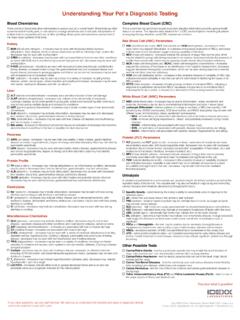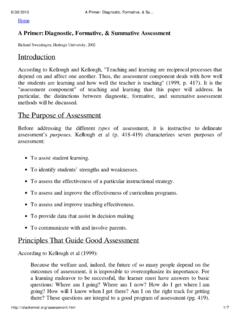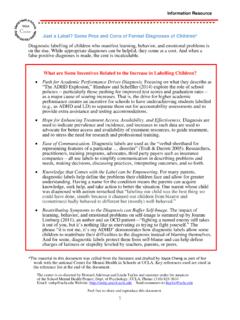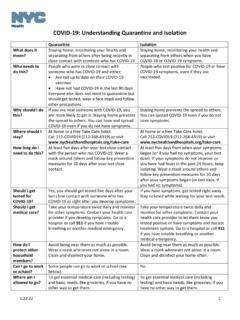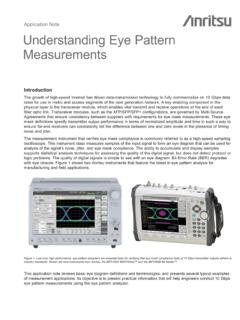Transcription of Comprension Diagnostic Test - Weebly
1 Diagnostic AssessmentGrades 1 i3/17/08 3:17:06 PM3/17/08 3:17:06 iv3/17/08 3:19:46 PM3/17/08 3:19:46 PMILLUSTRATIONRuth Flanigan; Eileen HineACKNOWLEDGMENTSH oughton Miffl in Diagnostic Assessment is based on the CORE Phonics Survey pages 63 80 from CORE Assessing Reading: Multiple Measures for Kindergarten Through Eighth Grade, Arena Press, Novato, CA. Copyright 1999 by Consortium On Reading Excellence, Inc. Reprinted by permission of Consortium On Reading Excellence, each of the selections listed below, grateful acknowledgment is made for permission to excerpt and/or reprint original or copyrighted materials, as follows:Selection from A Chair for My Mother, by Vera B. Williams. Copyright 1982 by Vera B. Williams.
2 Reprinted by permission of Greenwillow Books, a division of HarperCollins from An Octopus Is Amazing, by Patricia G. Lauber. Copyright 1990 by Patricia G. Lauber. Reprinted by permission of HarperCollins from The Midnight Fox, by Betsy Byars. Copyright 1968 by Betsy Byars. Reprinted by permission of Viking Penguin, a Division of Penguin Young Readers Group, a Member of Penguin Group (USA) Inc., 345 Hudson Street, New York, NY I0014. All rights from Tornado Alert, by Franklyn M. Branley. Copyright 1988 by Franklyn M. Branley. Reprinted by permission of HarperCollins from All for the Better, by Nicholasa Mohr. Copyright 1992 by Sopris West Educational Services. Reprinted by permission of Sopris from Rattlesnakes, by Russell Freedman.
3 Copyright 1986 by Russell Freedman. Reprinted by permission of the from The Girl Who Cried Flowers, from The Girl Who Cried Flowers and Other Tales, by Jane Yolen. Copyright 1974 by Jane Yolen. Reprinted by permission of Curtis Brown, from The Great Yellowstone Fire, by Carole Garbuny Vogel and Kathryn Allen Goldner. Copyright 1990 by Carole Garbuny Vogel and Kathryn Allen Goldner. Published by Sierra Club Books/Little, Brown and Company. Reprinted by permission of McIntosh & Otis, by Houghton Miffl in Company. All rights reserved. No part of this work may be reproduced or transmitted in any form or by any means, electronic or mechanical, including photocopying or recording, or by any information storage or retrieval system, without the prior written permission of the copyright owner unless such copying is expressly permitted by federal copyright law.
4 Requests for permission to reproduce any part of the work should be addressed to Houghton Miffl in Harcourt School Publishers, Attn: Permissions, 6277 Sea Harbor Drive, Orlando, FL is hereby granted to teachers to photocopy for classroom use the pages or sheets in this work that carry a Houghton Miffl in copyright notice, provided each copy shows the copyright notice. Such copies may not be sold and further distribution is expressly prohibited. Requests for information on other matters regarding duplication of this work should be addressed to Houghton Miffl in Harcourt School Publishers, Attn: Permissions, 6277 Sea Harbor Drive, Orlando, FL in the : 978-0-547-15396-41 2 3 4 5 6 7 8 9 MAZ 17 16 15 14 13 12 11 10 09 08 If you have received these materials as examination copies free of charge, Houghton Miffl in Harcourt School Publishers retains title to the materials and they may not be resold.
5 Resale of examination copies is strictly of this publication in print format does not entitle users to convert this publication, or any portion of it, into electronic ii7/2/08 1:13:52 PM7/2/08 1:13:52 PMOverview of Test 1 SECTION ONEP honemic Awareness and Phonics/Decoding Administering and Scoring 4 Using the Results 6 Sample Case Study 8 Scoring and Analysis Summary 12 Directions and Recording Forms 14 Student Page Blackline Masters 22 SECTION TWOText Reading: Comprehension, Decoding, and Fluency Administering and Scoring 28 Using the Results 36 Sample Case Study 40 Scoring and Analysis Summaries 46 Directions and Recording Forms 48 Student Page Blackline Masters iii3/17/08 3:19:24 PM3/17/08 3:19:24 PM1 OverviewDiagnostic AssessmentCopyright Houghton Mifflin Company.
6 All rights of Diagnostic AssessmentThe Diagnostic Assessment provides information on a student s performance on the essential skills and strategies necessary to be a successful reader. The test can be administered by classroom teachers or reading specialists. For students who have low scores on a group-administered test, the individually administered Diagnostic Assessment helps identify the specific areas where students show limited development and would benefit from focused instruction. Different sections of the test show how students apply skills to isolated words and to reading passages. The results of the test provide a baseline of student performance. (Note: For students who have difficulty with the phonemic awareness tasks and are at the emerging stages of literacy, use the Emerging Literacy Survey.)
7 There are two sections to Diagnostic Assessment. The first examines Phonemic Awareness and Phonics/Decoding. The second examines a student s skills and strategies in decoding, fluency, and comprehension while reading passages ONEP honemic Awareness Phonemic awareness is the ability to hear and manipulate sounds in words. It is the understanding that spoken words are a collection of sounds. It is an auditory skill and does not rely on print. Phonemic awareness is a strong predictor of success with phonics and decoding. This test assesses three key phonemic awareness skills that directly support beginning decoding (beginning sounds, phoneme blending, phoneme segmentation).Phonics/Decoding Phonics and decoding are print-based skills. Students learn to recognize that letters stand for sounds and those sounds are put together to form words.
8 In this Diagnostic Assessment, students are asked to decode words with a range of phonic elements that progress in assess a student s strategies with sounds and decoding accurately, it is important to look at the results of all of the subtests. By reviewing a student s errors as a whole, patterns emerge and instruction can be targeted to the needs of the 13/17/08 3:06:42 PM3/17/08 3:06:42 PM2 OverviewDiagnostic AssessmentCopyright Houghton Mifflin Company. All rights TWOS ection two of Diagnostic Assessment contains reading passages that are sequenced from beginning first grade through a beginning sixth grade reading student reads selected passages aloud while you note errors. Then, the student is asked to retell the content of the passage and orally answer comprehension questions.
9 As a result, the passages allow you to focus on a student s skills and strategies in decoding, fluency, and comprehension. Keeping in mind the decoding strengths and weaknesses identified in Section One, you can observe how the student applies those skills and strategies in running text as the passages are read passages represent a variety of story types and interests, with a narrative and an expository selection at each grade. The content is developmentally appropriate, and the passages are designed for easy administration and scoring. The test results allow you to assess whether the student reads at, below, or above grade Accuracy A decoding accuracy score gives you the percentage of words that the student reads correctly. After analyzing all errors, you can determine the areas that need more specific instruction.
10 For example, a student may consistently miss words with consonant digraphs or vowel Within Section Two there are two ways to evaluate fluency, which is defined as reading rate plus attention to phrasing and expression. The reading rate is assessed by calculating words correct per minute, or WCPM. Phrasing and expression, which reflect a student s understanding of the text, are scored by using a 4-point rubric that is provided for Comprehension is assessed using two different measures. First, the student reads the passage and then retells it in his or her own words. The value of retelling is in determining the student s understanding of the important concepts of the passage. The student should be able to tell the main idea and most important details, keeping the ideas in logical sequence.
